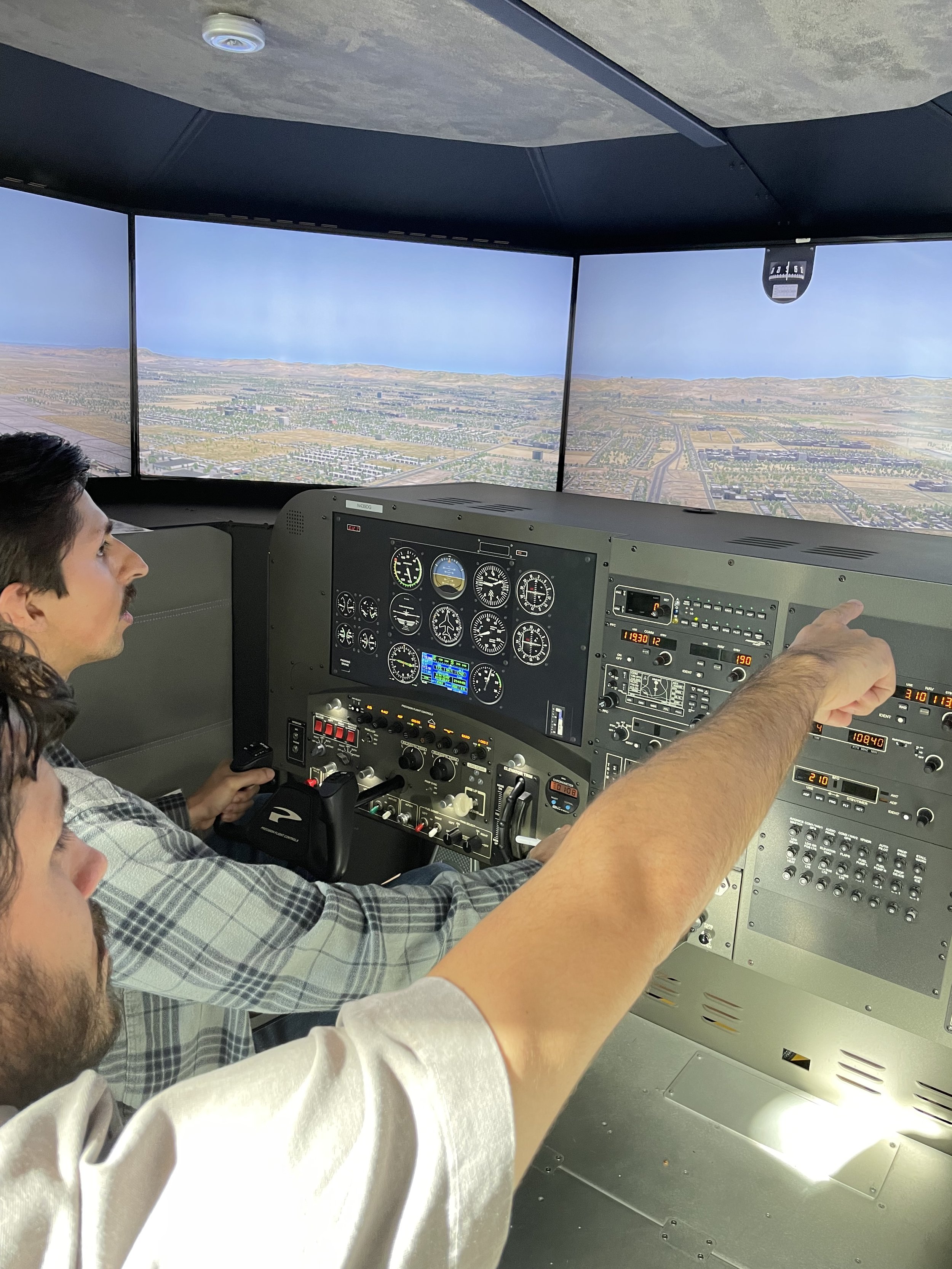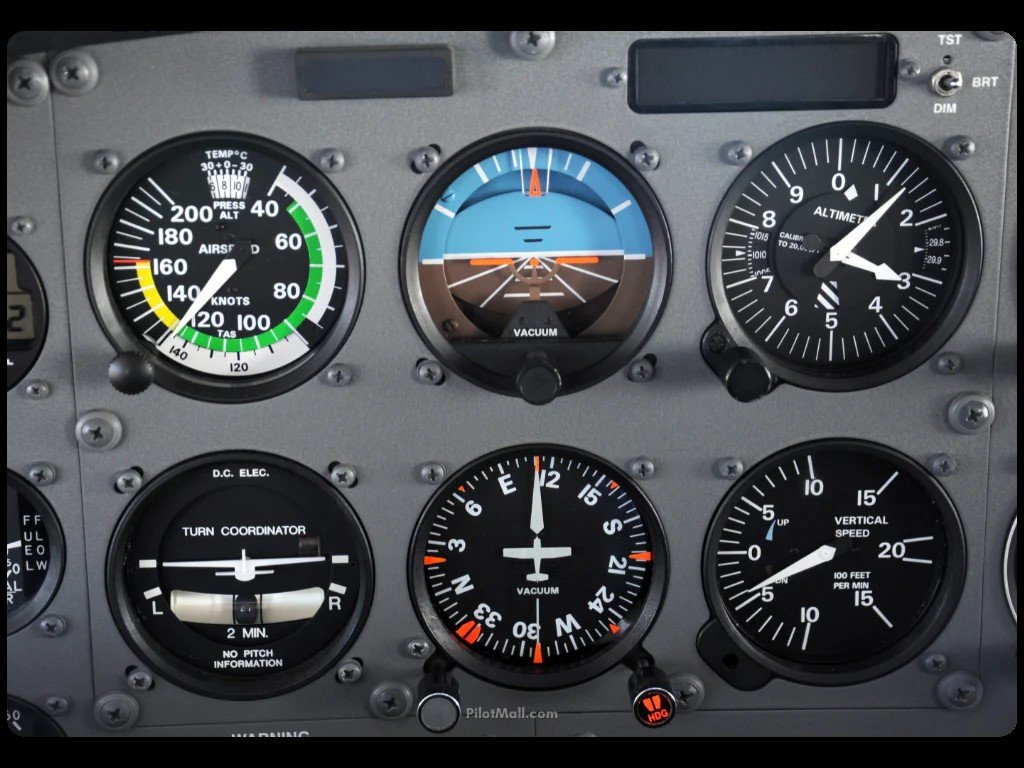How to obtain your Instrument Rating
After getting your Private Pilot License, the next step is getting your Instrument Rating.
An Instrument Rating (IR) is a critical certification that allows a pilot to fly under Instrument Flight Rules (IFR), meaning that you can operate an aircraft solely by referencing instruments, without relying on visual cues outside the cockpit. This rating is essential for flying in adverse weather conditions, such as low visibility, clouds, or at night, when relying on visual references is not feasible.
Why Obtain an Instrument Rating?
Expand Operational Limits:
The primary benefit of an instrument rating is the ability to fly in a wide range of weather conditions, including clouds, fog, heavy rain, or low visibility, that would otherwise restrict your flying to visual conditions (VFR).
With an IR, you can legally fly in IMC (Instrument Meteorological Conditions), which includes most weather scenarios that aren’t suitable for VFR flight.
Safety and Skill Enhancement:
An instrument rating improves your aeronautical decision-making, situational awareness, and overall safety. By training to rely solely on your instruments, you learn to fly more precisely and manage emergencies, such as system failures, more effectively.
It’s a safeguard against spatial disorientation, as you’ll have the skills to navigate and control the aircraft using only your instruments when visibility is zero or severely limited.
Career Advancement:
If you’re looking to build your professional pilot credentials, an instrument rating is a prerequisite for most commercial aviation jobs. Whether you're aiming for a role with a regional airline, corporate aviation, or as a flight instructor, the IR is a foundational qualification.
It’s also required for more advanced ratings, like the Commercial Pilot License (CPL) and Airline Transport Pilot License (ATPL).
Operational Flexibility:
With an instrument rating, you have the flexibility to conduct flights in a variety of weather conditions, allowing you to meet scheduling requirements even in challenging weather, and open up more flight planning opportunities.
Eligibility
Read, speak, write, and understand the English language
Hold at least a current private pilot certificate, or apply for a private pilot certificate along with their instrument rating
Receive and log ground training from an authorized instructor or accomplish a home study course for the aeronautical knowledge required for the rating
Receive an endorsement from an authorized instructor to take, and pass, the instrument rating knowledge test
Receive and log the required flight training
Syllabus
20 Hours of Flight Time
Most of your training will be in the actual aircraft: our Piper Cherokee PA-28. Learn how fun and exciting flying through the skies can be with our highly trained pilots.
20 Hours of Flight Simulator
Based on the popular Cessna 172, our One-G Foundation simulators are model-specific FAA Approved Aviation Training Devices that are designated as platforms for integrated instruction for all pilots, from student through commercial.
30 Hours on The Ground
You will be learning alongside a small group of individuals who share a common goal. Your academy group will work together in a classroom environment for aviation concept learning and practice teaching on the ground and in the simulator.
15 Hours of Online Videos
Like all classes, there is some homework to reinforce your learning and help teach you fundamental concepts that are critical to becoming a successful pilot. We partner with Sporty’s to integrate the Online Training For our Private Pilot students.
Frequently Asked Questions:
What is your instrument rating?
How hard is it to get your instrument rating?
How many hours are required for instrument rating?
Is a private pilot license the same as an instrument rating?
What is the benefits of an instrument rating?
Earning an instrument rating is a challenging but achievable goal that requires dedication and practice. Several factors contribute to its difficulty, as pilots must develop new skills, manage a higher workload, and master complex procedures.Challenges:
New Skill Set: Transitioning from Visual Flight Rules (VFR) to Instrument Flight Rules (IFR) requires pilots to rely entirely on instruments rather than visual cues, which demands a significant mental adjustment.
Increased Workload: Pilots must handle navigation, communication, and flight control simultaneously, often in low-visibility conditions, making effective multitasking essential.
In-Depth Knowledge: The training involves studying meteorology, flight planning, and instrument procedures, such as holding patterns, approaches, and departures.
Precision Flying: Instrument flying requires a high degree of accuracy. Even minor mistakes can have significant consequences, so attention to detail is crucial.
What to Expect:
Flight Hours: The Federal Aviation Administration (FAA) mandates a minimum of 40 hours of instrument flight time — some of which can be completed in a simulator — and 50 hours of cross-country Pilot in Command (PIC) time.
Ground School: Pilots undergo extensive ground training, covering regulations, instrument procedures, and weather theory.
Checkride: The final step is a practical test, or "checkride," with an examiner. Pilots must demonstrate both their theoretical knowledge and their ability to perform instrument procedures under pressure.
Time and Cost:
The timeline for earning an instrument rating varies. Intensive training can take a few months, but many pilots take longer, especially if training part-time. The total estimated cost with good IFR training is around $15,300. This depends on factors such as aircraft rental, instructor fees, and location.Despite the challenges, earning an instrument rating is incredibly rewarding. It enhances a pilot’s skill set, boosts confidence, and opens doors to more advanced flying opportunities. If you enjoy problem-solving, precision, and pushing yourself, this achievement is well worth the effort. Are you considering pursuing your instrument rating? Reach out to our team and we will be happy to assist.
Congratulations on obtaining your Private Pilot License! You’ve taken a remarkable step in your aviation journey. Now, the next thrilling phase awaits - acquiring your Instrument Rating. With this rating, you’ll unlock a whole new dimension of flying, where you’ll soar above the clouds, amidst serene skies, and enjoy unparalleled visibility.
The Instrument Rating is a vital milestone in your progression as a pilot. It equips you with the skills and knowledge to confidently navigate through various weather conditions, including those that obscure the horizon. By mastering the art of flying solely by the reference to instruments, you’ll elevate your abilities to that of a true professional pilot.
Imagine the thrill of gliding through clouds, relying on your instrument panel as your guide. With enhanced precision and situational awareness, you will conquer adverse weather situations, making you a more versatile and reliable aviator. The newfound sense of control and confidence will elevate your flying experience to a whole new level.
Beyond the exhilaration of flying above the clouds, the Instrument Rating brings numerous practical advantages. You’ll be able to undertake flights in conditions that were previously beyond reach, ensuring that weather surprises won’t hinder your plans. Whether it’s low visibility or adverse weather, you will be well-prepared to tackle any challenge that comes your way.
An instrument Rating (IR) is a pilot rating earned though intensive training focused on flying solely by reference to instruments. It is arguably one of the most valuable ratings you can add to your pilot certificate an dis a fund and challenging discipline of flight training. A well-trained and proficient instrument pilot can fly an airplane from point A to point B without ever having to look out the window except fo takeoff and landing; it is truly a remarkable sill.




